Table of Contents
- 1 An Everyday Practice of Mindfulness Meditation
- 1.1 Chapter 1
- 1.2 Introduction
- 1.3 Chapter 2
- 1.4 Humiliyt, Voluntary Sımplicity, And Concentration Practice
- 1.5 Chapter 3
- 1.6 Mindful Meditation Can Calm Your Chaotic Thoughts
- 1.7 Chapter 4
- 1.8 There Is No Right Or Wrong Way To Medidate
- 1.9 Chapter 5
- 1.10 Mindfulness Conceps
- 1.11 Chapter 6
- 1.12 The Tests Of Mindfulness
- 1.13 Chapter 7
- 1.14 Concluding Remarks
An Everyday Practice of Mindfulness Meditation
Matter …At some point in your life, you may have considered trying meditation or wondered what it would be like.
Even while this idea seems straightforward, you’ve definitely found yourself questioning how it’s even possible.
As you may imagine, that’s no picnic. But it is possible to do so.
In this synopsis of “No Matter Where You Go, There You Are,” we discuss the many advantages of meditation as well as its various methods and the meaning and practice of mindfulness.
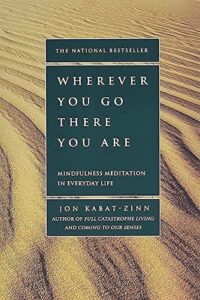
Practicing meditation and mindfulness every day How difficult is it for you to just relax and take it easy? When you’re on vacation or relaxing at the beach, you might think that nothing can possibly go wrong.
Then, you remember all the things that are bothering you, making it impossible to relax and take pleasure in the present. Sadly, many people let thoughts of the past and future distract them from the here and now.
When we let our brains wander and our bodies do what they want to do, we let this haze of not being present take over our lives.
The question then becomes, “How can we make sure this doesn’t occur?” So, what is the solution? Mindfulness.
The practice of mindfulness meditation emphasizes paying attention to and appreciating the here-and-now rather than letting one’s thoughts wander to the past or the future.
Mindfulness practices are discussed in depth, and you can use them anywhere you go, thanks to Wherever You Go, There You Are. Your mind will settle as you study the various techniques of mindful meditation discussed in this book.
Which Readers Would Benefit from Reading “Wherever You Go, There You Are”? for what reason, if any?
“Wherever You Go, There You Are” is widely regarded as a modern classic on the subject of meditation. Fairness demands I point out the valid reasons for this. It’s great, and it opens up the practice of meditation to more people.
The chapters are brief and focused on specific topics. In many cases, these are presented as thought-provoking questions or straightforward activities.
All those interested in calming their nerves, sharpening their concentration, and expanding their capacity for mindfulness can benefit from reading this book.
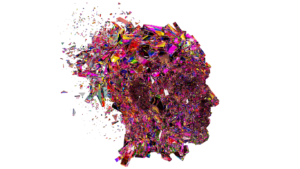
Chapter 1
Introduction
Your first thought about meditation might be that only Buddhist monks can truly benefit from it. Nonetheless, modern-day meditators aren’t limited to Buddhist monks.
Anyone can benefit from and enjoy regular meditation practice. That’s because all you have to do to meditate is pay more attention, and everyone can do that!
Depending on how well you think you know yourself, this exercise might be straightforward or intricate. The people who believe they have everything figured out are so confident in their own abilities that they stop paying attention to the world around them.
But this way of thinking is equivalent to a Buddhist being oblivious to reality. Instead, we should try to appreciate the here and now by paying close attention to our surroundings.
Practicing “mindfulness,” often known as “admiration for the present time,” is at the core of all contemplative traditions. Meditation is a skill that, once mastered, may be practiced anywhere, at any time.
If you can pull your attention away from your thoughts long enough to concentrate on your breathing, you will find that you are able to relax.
Meditation and concentration are aided by maintaining a calm, respectful posture. Then, what’s the point of starting to meditate mindfully?
Living in the present moment can bring you untold bliss. Knowing this about yourself will aid you in dealing with negative feelings like despair, dread, and fear. Mindfulness will ultimately lead to self-awareness, which will free your mind to explore new possibilities and uncover your full potential.
And finally, meditation is accessible to everyone. While it takes time and effort to become proficient at meditation, the rewards of consistent practice include the potential for enhanced self-awareness and development.
If you think you can’t meditate, you might as well believe you can’t breathe, focus, or unwind. Let’s begin if you’re serious about discovering your hidden potential.
First, we will learn how to be more patient, nonjudgmental, and generous.
People often think that in order to get the benefits of meditation, they have to train for decades. Even though it may take some time and effort, everyone may practice mindfulness meditation.
In reality, mental prowess is the sole necessary physical quality. Improving certain traits should be your initial goal in training. Learn to be patient with the little things, even when it seems counterintuitive.
Take a second to remind yourself how useless it is to feel frustrated or aggravated about being stuck in traffic. As an alternative, make an effort to be patient, even if doing so is challenging or fruitless.
Witness the Dalai Lama, who maintained his composure even while the Chinese government committed horrific crimes of genocide against the Tibetan people. Rather, he realized that he would never give over his thoughts to the Chinese, no matter how much the latter took from them.
When you’re patient, you accept the current state of affairs and wait for things to improve in their own time. Thus, if you feel yourself getting irritated or impatient, remind yourself to instead adopt a more patient and compassionate attitude.
The next step is to train yourself not to pass judgment. While sitting in meditation, one begins to realize just how often their thoughts pass value judgment.
This is due to the fact that your brain is wired to label every event you have as either positive or negative.
But if you’re patient and take a step back, you’ll see that you can’t possibly know everything. Don’t rush to conclusions about the situation’s inherent goodness or badness; instead, have trust that things will work out as they should.
With this kind of open, detached perspective, you can stop dwelling on the past and start making the most of the present moment.
Following humility, generosity is the next virtue to develop. People who care about making the world a better place tend to be generous people.
The emphasis is on abandoning a self-centered perspective in favor of one that is more accepting and trusting of others. It also emphasizes being generous with your skills and talents.
This does not have to involve the exchange of money or things; it can refer to the free flow of positive emotions such as elation, trust, and compassion.
However, an insular outlook that develops from hoarding and a lack of confidence in others leads to perpetual concern that keeps one from enjoying the here and now.
Finally, you must keep on freely giving your love and trust to others in the world, no matter how often you are hurt by the actions of those around you. If you don’t, you’ll keep repeating the same destructive patterns over and over again.
Chapter 2
Humiliyt, Voluntary Sımplicity, And Concentration Practice
You can further your journey toward mindfulness by engaging in certain additional practices in addition to generosity, patience, and nonjudgment.
Consider the importance of humility in the character of a thoughtful person. Individuals are quite frail; even the most accomplished among us have been driven to their knees by defeat and humiliation on more than one occasion.
Consequently, you need the humility to recognize your own humanity’s inherent frailties and flaws. Doing so will allow you to start fortifying yourself.

But people who refuse to acknowledge their flaws often come off as insecure or even crazy. That’s because people have a hard time putting their faith in those who don’t show any humility and who act as though they already know everything.
Who among us, after all, has a head start at birth? Humbleness, voluntary simplicity, and concentration are all traits that can help you develop a mindful meditation practice.
The practice of voluntary simplicity entails focusing on a single task at a time. If you are with loved ones and your phone rings, you can choose to ignore it and focus on them instead.
The more you try to juggle in life, the more chaotic things get. To that end, try adopting a minimalist lifestyle on purpose. Not that you should do nothing, of course. Instead, you’re intentionally refraining from specific actions in order to foster calm and gratitude.
Finally, mindfulness requires focus in order to be effective. The good news is that increasing your level of awareness will allow you to focus more intently.
So, in addition to the obvious benefits of meditation and mindfulness, you should also work on improving your focus. Mindfulness can’t be practiced smoothly unless one is able to focus intently.
Focused attention allows you to give your whole attention to the present moment. There will be silence and tranquility, and all other thoughts and concerns will evaporate.
Concentration requires not only the ability to focus but also the willingness to wait for results. The ability to focus and delve into more profound thoughts that really can lead to profound insights into life and the world is a direct result of practicing patience.
Chapter 3
Mindful Meditation Can Calm Your Chaotic Thoughts
Do you ever feel that a raging storm in your head is swallowing up all of your thoughts? Feelings of mental chaos are common when agitation or triggers set in.
Meditating might help you weather the mental storm and continue your journey in peace. Although this is encouraging, remember that you have to calm the tempest in your mind before you can actually control it.
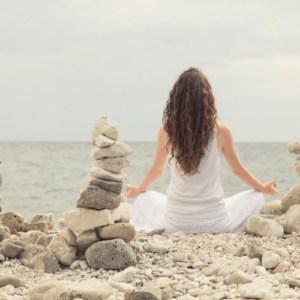
You may learn to weather the storm without getting irritated or furious if you take the time to observe your thoughts. As a result, you should approach meditation as a paradigm shift from doing to being. In other words, don’t just continue to do things without giving any attention to the repercussions, but rather, be present in your life at all times.
In order to be present and mindful, it helps to take stock of one’s immediate environment. Examine the ways in which today is different from those you’ve had.
Perhaps allow yourself to be caressed by the wind or bask in the sun. Observe the world around you, from its tiniest shifts to its most dramatic transformations, taking in fresh perspectives and meeting new people along the way.
The next step is to become aware of and control your breathing. If you’re having trouble relaxing, try focusing on your breathing without trying to manipulate it in any way.
Just take note of it. Bringing yourself back to the here and now can be as simple as paying attention to your breathing. You may center yourself with a single, deep breath.
Finally, keep in mind that this is it. In other words, you should only worry about what’s happening right now because you never know what the future holds and the past is already history.
Only in the present can you make adjustments and improve; the past and future are of no use. Whenever your thoughts start to wander, check in with yourself to see where they currently are, and then give those thoughts a unique spin so you can see that you are more than what’s on the page.
Learning to meditate is the first step in learning to control the chaos in your head. This doesn’t mean you’ll do the same thing again and again; rather, you’ll practice coming back to the here and now.
Being present is something that will come easily to you in time. The great thing about meditation is that it can be done anywhere at any time.
You don’t need to go to Walden Pond like Henry David Thoreau to develop your awareness. You may instead practice meditation pretty much everywhere you have access to air.
If you commit to meditating every day, you’ll eventually get the ability to make judgments without second-guessing or worrying.
Chapter 4
There Is No Right Or Wrong Way To Medidate
There are numerous approaches to practicing mindfulness meditation. While there is no single “correct” form of meditation, there are techniques that can enhance your focus and awareness.
If you want your practice to benefit, for instance, you should focus on your posture. Initiate your meditation practice by sitting, as this is the most typical position in which to do so.
Get your bearings by sitting up straight with your shoulders back and your arms at your sides. Don’t hunch your shoulders and remember to smile. As a last step, maintain a straight spine, neck, and head.
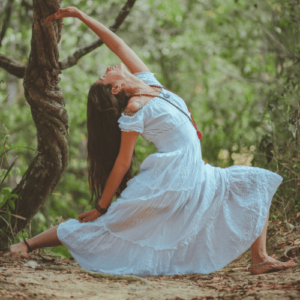
Maintaining proper posture and being self-aware in your daily interactions are just as important as sitting in a lotus position during meditation.
People form impressions of you depending on how you look, and they draw inferences from your body language whether or not you intend them to.
The right posture is key to developing a mindful demeanor. Maintaining proper posture requires attention to the placement of the hands and feet.
You need to put them where they can most effectively channel energy. You can improve your meditation by experimenting with different hand positions while seated.
When you sit with your palms resting on your knees, it may be a sign that you are content with your situation in life, whereas when you turn your palms up, it may indicate that you are willing to embrace change.
Secondly, it doesn’t matter how long you meditate for so long as you maintain awareness the whole time. To get started, try meditating for as little as five minutes at a time, and gradually increase this time until you’re able to sit for forty-five minutes straight.
Even if you only have a minute to spare between phone calls or meetings, try to squeeze in some meditation time. Meditation can help you focus for longer periods of time, so after some consistent practice, it’s worth investigating.
Always keep in mind that you aren’t attempting to replace your chaotic thoughts with more orderly ones, but rather to examine them from the outside.
At some time throughout your meditation, you may feel the impulse to stop. Try to identify the source of this urge the next time it occurs. It’s possible that you’re weary, impatient, or uneasy right now.
The time for meditation may have come to an end. Stay in the present now for a while longer, take a few deep breaths, then slowly emerge from meditation once you’ve identified the source of the need to cease.
There is no one correct method of meditation; do what works for you. While sitting quietly for a period of time is commonly associated with meditation, this is by no means the sole method. Walking or standing meditation are two additional options.
When engaging in walking meditation, it is important to focus on each step you take. Think about the motion of your foot as you lift it and set it down.
Keep your eyes open and ears tuned in when walking, and use your environment to help you focus. Try practicing standing meditation in the company of trees, for instance.
Just close your eyes and see yourself as a tree. Put your mind in a state where your feet are firmly rooted in the earth. Then move your body in a swaying motion, as if you were a tree swaying in the wind.
As a last note, lying down can be beneficial for mindfulness practice if you are too weary to sit up. The first step in relaxing while lying on the floor is to let go of any tension in your muscles.
Relaxing your muscles will help you clear your head and unwind. Next, visualize your body melting into the ground. You can do a full body scan by paying attention to each individual portion, or you can simply focus on your entire body at once.
While doing the scan, you can direct your attention to various parts of your body, shift those parts in any way you desire, and infuse your body with energy by controlling your breathing.
Try visualizing the air entering your toes as you inhale, as one example. Next, as you let your breath out, relax your toes and let them hang limp.
Chapter 5
Mindfulness Conceps
Meditation is more than just finding a comfortable seat and clearing your mind. Mindfulness concepts and their meaning to you are more vital to a successful meditation practice than physical preparation.
To start, there’s nondoing, which is the first mindfulness practice. This is far worse than doing nothing; it’s deliberate inaction. Being mindful entails giving up the need to plan out every detail of your future and focusing on the here and now.
Forget attempting to force a certain result; nodding is all about chilling out and accepting the world as it is. By practicing nondoing, you can see that the trials you endure now are for the greater good of your future self.
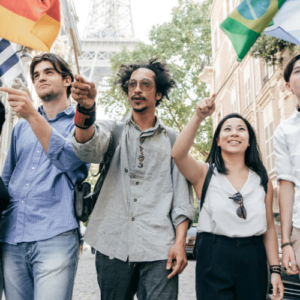
This “flow” state is sought after by many artists since it is the key to unleashing one’s full creative potential.
Karma is the next idea to be explored. A person’s karmic repercussions are the direct outcome of their own acts and beliefs.
Negative karmic cycles can trap you if you’re not careful, and they’re triggered by your own deeds or thoughts from the past. Meditation can help you break these loops by forcing you to be present and releasing you from the shackles of the past.
You’ve probably witnessed folks who become caught in endless loops where they can’t move on from a mistake they made because they feel like it has ruined their lives.
Only by being aware of and letting go of your negative actions can you regain control of your happiness.
Then there is “ahimsa,” which means “not injuring.” In other words, we should all exercise restraint and avoid causing any unnecessary harm to the Earth or any of its inhabitants.
Maybe you’ve heard the old adage, “if you can’t assist others, at least don’t harm them.” That is to say, if you are unable to assist someone in the manner in which they have requested, it is courteous to politely decline their request.
Avoid making any kind of slur, such as calling his plan foolish, and just explain that you are too busy dealing with your own issues.
Self-criticism is a natural part of nonharming behavior. It’s not healthy to belittle or degrade yourself. Instead, have compassion and understanding for your own flaws and the flaws of those around you, as if you were dealing with a tiny child.
The final principle of mindfulness is completeness. When you’re living a thoughtful, connected life, you feel complete. The feeling that your activities affect more than just yourself and that you have a place in something larger than yourself.
Selfing, or egotism, is the antithesis of completeness. Selfish people care only about their own feelings and ignore the consequences their actions may have on others.
Selfing occurs whenever a person has thoughts that begin with “I” or “my.” Fortunately, meditation can assist you in conquering such egocentric tendencies and expanding your awareness beyond your physical self.
Chapter 6
The Tests Of Mindfulness
There are a lot of distractions in the modern world. Our culture is built on ideas that center on the past and the future. In fact, entire businesses are predicated on people’s shared anxiety.
Think about health insurance; when the government doesn’t pay for it, it gives people something to worry about. And since no one wants to be in a position where they can’t provide for themselves or their families, insurance firms make a killing off of this dread.
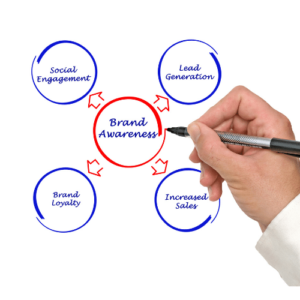
Distractions might be just as much of a problem as worrying. If you are a mother, for instance, it is highly unlikely that you will be able to meditate for extended periods of time without being disturbed by your children.
It’s fine if this happens. Instead of feeling angry when you’re interrupted, just roll with it and take care of your family’s needs. As soon as they are, you can continue with your training.
There is no single correct way to be, no single correct method to practice, no single correct way to learn, no single correct way to love, no single correct way to evolve or heal, no single correct way to live, feel, know, or be known, as Kabat-Zinn so eloquently puts it.
Never will you be free of the world’s temptations unless you live like the stereotypical ancient monks and go into the forest, which is obviously not a viable option for most people living in the modern world.
Instead, use life’s interruptions as a chance to train your attention and focus. If people come at you all hot and bothered, you can utilize this as an opportunity to practice your meditation skills.
When someone approaches you for aid, listen to them, solve their problem if you can, and then return to your contemplative posture.
If you give in to your irritation at being interrupted, your meditation practice may have the opposite effect of what you intended.
Every challenge is a chance to show your mettle and every distraction a chance to remind you to focus on the positive instead of the negative.
With this style of thinking, you will not only be contributing to a more peaceful and appreciative world, but you will also be contributing to your own sense of well-being.
Chapter 7
Concluding Remarks
Consider how much more peaceful the world would be if everyone practiced mindfulness and controlled their emotional responses.
Taking time out to do nothing but observe your surroundings can help make this a reality.
Furthermore, if you’re having trouble focusing, try shifting your perspective to help you recognize what’s getting under your skin and figure out how to break the cycle.

Next, be aware of the impact you’re having on the world around you and how your presence and actions can change things. No, this isn’t an impossible feat.
Just stop what you’re doing, take a deep breath, and center yourself. Indeed, it’s that simple. Remember that even if that doesn’t work, you still have the next breath you take and the next heartbeat your body experiences; every second is a fresh start.
Important Takeaways from “Wherever You Go, There You Are”
1. Characteristics of a Meditative Mindset
2. Positions and Methods for Meditating
3. Mindfulness Theories
1. The Meditative Individual:
Practicing meditation is something that can be done by everyone; it is not a skill that one is born with. However, there are a few traits that make meditating easier, so if you’re serious about developing your awareness, you might as well work on them.
These characteristics include calmness under pressure, acceptance of others as they are, openness, modesty, self-control, and focus.
2: Positions and Methods for Meditating
Meditation does not require a specific time or location to be practiced.Simply redirecting your attention to the here-and-now will help you develop a habit of presence.
Moreover, your posture conveys a message to yourself or the world during meditation. The traditional meditation posture involves sitting with a straight back and a firm sense of one’s feet on the floor.
In addition, there are widely held views on how one should hold one’s hands during meditation across the vast majority of spiritual and religious traditions.
Determine through trial and error which hand placements work best for you.
Now, if you find that walking, standing, lying down, or performing yoga are less comfortable alternatives to sitting, you have some options.
3. Finally, keep in mind that there is no right or wrong method to meditate.
That’s why we called it a basic idea; all you need is attention and awareness, and you’ll be good to go.
Concepts Related to Mindfulness:
Just being, rather than thinking, is at the heart of meditation. Mindfulness may be attained with the aid of certain ideas.
The term “nondoing” means “not doing anything.” It’s a contemplative expression for focusing one’s awareness on the here and now. It’s about letting go of control and accepting how events happen.
“Karma” is the concept that everything that comes to you is a consequence of anything you did or felt in the past. Since your reactions to life’s events are based on learned behaviors, each new instance of bad karma perpetuates the cycle and keeps you trapped. If you’re stuck in this rut, meditating can help you break free.
“Ahimsa” means “nonviolence” or “not causing harm to others or the environment.”
‘Wholeness’ is a state of mind attained via meditation. To the point of experiencing global unity.
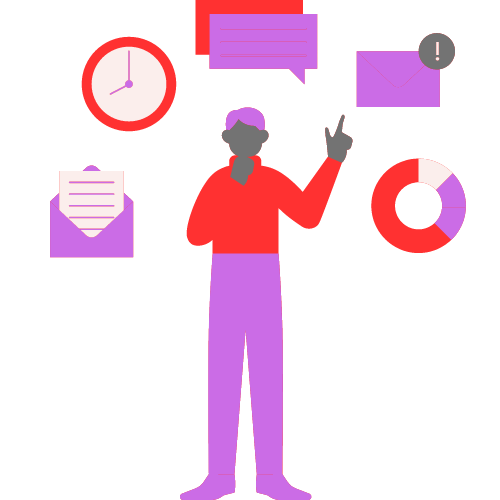
Buy this book @ Amazon: No Matter Where You Go, There You Are
Read more book summaries: “If a human has no direction, every wind is a fresh breeze” ― lenfantvivant
“Thought is only an abstraction representing a fraction of what is.” ― Lenfantvivant
”Widen The Window”(2019) Book Summary
Summary of “Atomic Habits” (2018)

